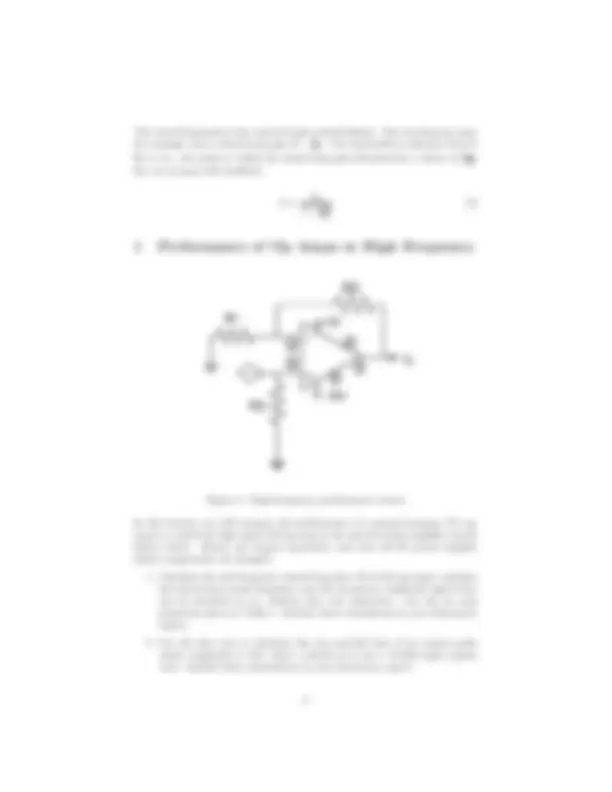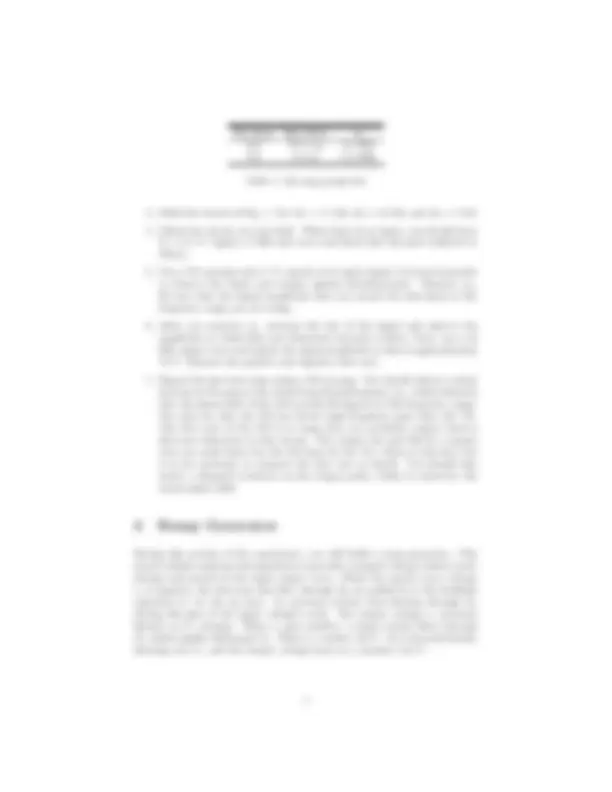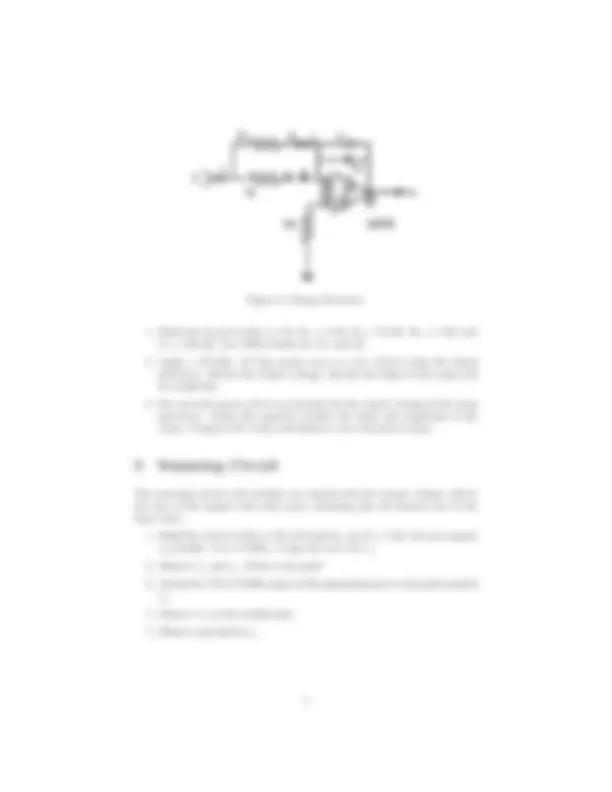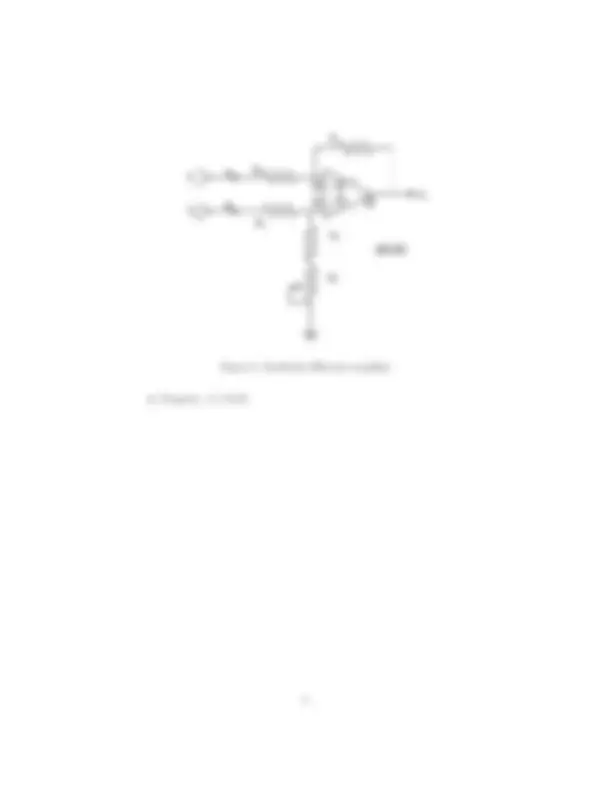






Study with the several resources on Docsity

Earn points by helping other students or get them with a premium plan


Prepare for your exams
Study with the several resources on Docsity

Earn points to download
Earn points by helping other students or get them with a premium plan
Community
Ask the community for help and clear up your study doubts
Discover the best universities in your country according to Docsity users
Free resources
Download our free guides on studying techniques, anxiety management strategies, and thesis advice from Docsity tutors
The 'golden rules' of negative feedback for op-amp circuits, focusing on the ideal op-amp characteristics and their implications for circuit analysis. concepts such as infinite open-loop gain, zero input impedance, infinite bandwidth, and no input offset voltage. It also provides examples of circuit analysis using the inverting op-amp and discusses practical considerations like slew rate and gain-bandwidth product.
What you will learn
Typology: Schemes and Mind Maps
1 / 8

This page cannot be seen from the preview
Don't miss anything!





The purpose of this experiment is to illustrate the “golden rules” of negative feedback for a variety of circuits. These concepts permit you to create and understand a vast number of practical circuits using only two simple rules. The op-amps used in this experiment are fully compensated, i.e. the open-loop phase shift is less than 135◦^ to reduce the danger of oscillation. However, for future applications you should remember that a compensated op-amp can oscillate if additional phase shift is introduced accidentally in the feedback loop.
The ideal op amp has the following characteristics:
The most important of these rules in terms of circuit analysis are that the inputs draw no current and the inverting (v−) and non-inverting (v+) input voltages are approximately the same. So, the key rules to analyzing op amps are as follows:
A simple example of these rules can be examined using the inverting op amp as shown in Fig. 1. To begin the analysis, consider the voltage at the non- inverting (+) input of the op amp. From the characteristics of the ideal op amp, it is known that no current flows in to or out of the inputs. Because of this, no current flows through resistor R 3 , so there is no voltage drop across this resistor. The voltage v+ must then be equal to the voltage before the resistor. Since the other side of R 3 is connected to ground, v+ = 0.
Further, since v+ ≈ v−, v− = 0. Now, analyzing the node at the non-inverting input, it can be shown that
vo − v− R 2
vi − v− R 1
vo R 2
vi R 1
vo = −
vi
In practical op amps, the rate at which the output voltage can change is limited. The maximum rate of change of the op amp output voltage is called the slew rate. The slew rate for the 741 op amp is typically 0.7 (^) μVs. The maximum peak to peak output voltage obtainable is given by
Vmax,pp =
ΔV Δt πf
Op amps also have finite bandwidth owing to capacitance within the op amp’s circuitry. This is characterized by the gain bandwidth product. The bandwidth (B), closed loop gain (G 0 ), and unity gain frequency (fT ) obey the relationship
G 0 B = fT (2)
Op Amp Slew Rate fT 318 70 V/μs 15 MHz 741 0.5 μs 1.2 MHz
Table 1: Op amp properties
During this portion of the experiment, you will build a ramp generator. This circuit utilizes resistors and capacitors to provide a ramped voltage which is reset during each period of the input square wave. When the square wave voltage vi is negative, the electrons that flow through R 2 are pulled in to the feedback capacitor Cf by the op amp. D 1 prevents current from flowing through R 1 during this part of the input voltage’s cycle. The output voltage vo increases linearly as Cf charges. When vi goes positive, a large current flows through R 1 which rapidly discharges Cf. When vo reaches -0.6 V, D 2 is forward biased, shorting out Cf , and the output voltage stays at a constant -0.6 V.
Figure 2: Ramp Generator
The summing circuit will combine two signals and the output voltage will be the sum of the signals with unity gain, assuming that all resistors are of the same value.
Figure 4: Reactance in the feedback loop
vo vi
(v 2 − v 1 ) (6)
that is, it amplifies the difference between input voltages v 1 and v 2. For the circuit to work properly, the resistance in the feedback loop must be exactly equal to the series combination of R 4 and R 5.
Figure 5: Feedback difference amplifier